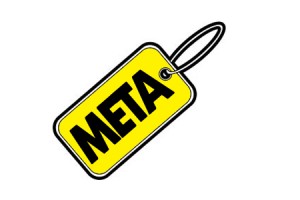Lesson 1 – Outline to Search Engine Optimization (SEO) Techniques

Today we will be discussing SEO or more specifically Search Engine Optimization techniques. You might be familiar with the word if you are a web master. However if you aren’t don’t worry it is not something that people know about.
Many have misconceptions about it and SEO is by no way a challenging topic to study exhaustively. And while it is a rare knowledge among people as it shouldn’t be, acquiring and learning techniques and methods of SEO are indeed quite simple and easy. In this lesson we would explain all about Search Engine Optimization (SEO) Techniques. (Actually we will need more articles to complete the entire Search Engine Optimization (SEO) Techniques)
Contents
What is Search Engine Optimization (SEO)?
SEO simply refers to Search Engine Optimization. These words might not make sense to you but it would once you have read the entire post. It actually and most importantly refers to creating a website that is search engine as well as user friendly. Majority of the traffic to the websites are through search engines. And more search engine familiar the website is better is the probability of the search engine to be the traffic source. What actually you gain by SEO is that you’re actually increasing the traffic to your website. This is the reason why SEO plays an important role in creating a good and popular website.
Search Engine Optimization (SEO) Techniques:
Since now you have the brief knowledge about SEO and why you should be doing it, you would like to see it being applied to your website or blog and earn its benefits.
We are discussing here three basic techniques that you could implement easily and immediately to your website. Here they are:
1: Search Engine Friendly Key phrases and Keywords:
This is the most elementary Search Engine Optimization (SEO) Technique. Keywords and Key phrase (two or more keywords) are simply words that a search engine spider (this goes through various websites and reverts back to the search engine databases) is programmed to discover and catch. For example a keyword can be “movies” while “hit movies” is a key phrase. Having these words in your website makes it more probable to grab the search engine spider’s attention. Practicing using keywords and key phrases proves to be very essential to make your website search friendly
2: Correct Labels or Heading:
When you visit a website you might have seen or noticed some text or maybe a small description on the top left corner of your browser. That is the “Title” of the web page. This is something that the search engine spider looks for when crawling on the website. Hence it is necessary to have a catchy and expressive title. However you should avoid using excessive number of keyword and the keyword you choose to use should be appropriate to the website. Spiders are so programmed that they usually have to look over those websites that uses excessive amount of keywords. For instance your site is on social media marketing an appropriate SEO title could be “SocialMedia.com- Your place for Social marketing”
3: Keyword Density Within your Post:
Now once you have chosen the correct keyword and ready to write a post, keep in mind never to use excessive amount of keywords within your post. Overusing could instead get your page off the list and in that case it might be better not to use a keyword. What is keyword density? It is the total number of keywords occurring within the post divide by the total no. of words within your article or post. So if you have 300 words in your article or post and 9 keywords then the keyword density of your post would be 3%. The correct range of keyword density is between 2% to 7%. If you go beyond 7% you would be overusing also called keyword stuffing or if it is less than 2% it would be too less to have an impression
Lesson 1 in Analysis
Here in your first lesson you have learned the elementary codes or techniques for SEO, in fact we have done a lot to be able to apply or implement these on the website. Thank you for your time. We will soon be here with the next lesson i.e. Lesson 2.








